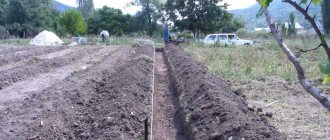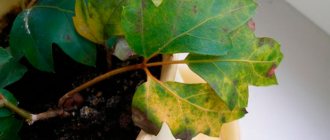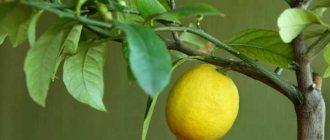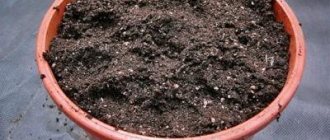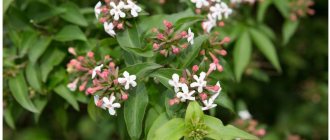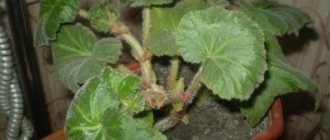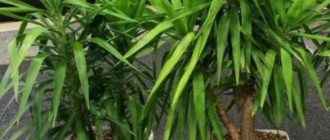Growing figs at home in a pot is not difficult. The plant is unpretentious. Subject to the rules of planting and care, it guarantees a high yield of fragrant, healthy fruits that ripen up to twice a year.
For areas with warm climates, growing fig trees in open ground is typical. The fruit plant takes root well in poor soils, as well as on rocky slopes. For most fig trees, limited root space encourages better fruiting, which guarantees good yield even in a flower pot.
Varieties of figs for home cultivation
When deciding to grow figs at home, first decide on the variety. Of the three groups of plants based on the method of fertilization, preference is given to parthenocarpic plants. They are characterized by self-fertile development of seeds that do not require caprifaction (pollination).
Among the common non-pollinated varieties of figs grown at home are:
- Sochi - 7, Sochi - 8. Characterized by large yellow fruits, elongated pear-shaped or flattened pear-shaped, weighing 55–60 g, sweet taste. Varieties bear fruit once a year, at the end of summer or at the beginning of autumn.
- Dalmatica. It is distinguished by large red, fleshy fruits that weigh 65–70 g, as well as dense, juicy pulp. The harvest is harvested twice a year, in summer and autumn.
- Kadota. A high-yielding variety of figs, it has large pear-shaped juicy fruits weighing 60–65 g.
- White Adriatic. It has sweet, light, yellow-green fruits, weighing 60g.
- Ogloblin seedling. Fruits 1-2 times a year. The pear-shaped fruits are medium in size and moderately sweet in taste. Interestingly, if the fruits begin to set in the fall, they will overwinter like small green berries. In spring, fig fruits enlarge, gain weight, and fully ripen in summer.
- Sukhumi purple. It bears fruit once a year (late summer - early autumn). It is characterized by large pear-shaped, blue-violet, often asymmetrical inflorescences weighing more than 50 g.
All indoor fig trees are characterized by small size and self-pollination.
Description of the plant
Figs in their natural habitat
The success of figs is due to its more than outstanding characteristics:
- high yield (up to 200 c/ha);
- harvesting two crops per year;
- ripe fruits contain a large amount of sugar (from 24 to 37%);
- high concentrations of useful substances in fruits - vitamins and microelements;
- universality of use of the culture (its delicious fruits are consumed raw and dried, jams, jams, juice and even bread are made from them);
- unpretentiousness of the plant - it can grow even on rocky soils and rocks;
- early fruiting and long life span - the plant begins to bear fruit in the third year of life and lives up to 60 years, with virtually no reduction in yield.
The beneficial properties of figs have been known for a long time. It has a beneficial effect on the cardiovascular system and improves metabolism. The sweet and healthy fruits of figs are also high in calories and can quickly satisfy hunger.
All this splendor of properties is offset by one drawback - figs are a heat-loving crop and in our area can be grown exclusively as a houseplant or greenhouse plant.
Despite their subtropical origin, there are also frost-resistant varieties of figs (for example, Brown Turkish), which can withstand frosts down to -20 degrees, but even they do not have time to ripen in our climate.
The article discusses how you can grow figs at home and how to care for the plant for its normal existence and abundant fruiting.
Fig or fig tree is a deciduous plant of the Mulberry family with light gray bark.
These exotic plants grow and bear fruit in climates that have sufficient days for the fruit to ripen.
The powerful stem (trunk) has a straight or slightly curved shape. Its height sometimes reaches 12 m (although there are also low-growing varieties, no more than 2 m high), and its thickness exceeds 50 cm. The skeletal branches of the plant are also thick and strong.
Its leaves have a five- or seven-lobed shape and long petioles. The size of the leaves can be quite large (up to 20 centimeters in diameter).
Dried figs are a real delicacy!
A special feature of figs is their pollination. During flowering, two types of inflorescences are formed in the leaf axils - figs and caprifigs, with female and male flowers, respectively. Moreover, both male and female flowers are located on the inner side of spherical oval formations with a hole at the top.
Most cultivated fig varieties have only female inflorescences (figs). In order for pollination to occur in gardens with cultivated fruit-bearing varieties, you need to plant 1-2 wild trees. Pollination is carried out by insects, namely blastophgi wasps. Getting from the male to the female inflorescence, they transfer pollen.
The fruit of a fig (fig, wineberry) is actually not a berry, but an infructescence consisting of many small flowers located inside the fruit shell
Despite the apparent complexity of the pollination process compared to other plants, figs have been “using” a similar scheme for more than 30 million years. Symbiosis with wasps is beneficial to both species - without figs, blastophages cannot reproduce.
Parthenocarpic (self-pollinating) varieties of figs have been artificially obtained that do not require such a complex pollination procedure to obtain fruit.
The root system of a plant can have different sizes. If the roots can provide the plant with enough nutrients, then they do not tend to grow.
Figs live quite a long time, up to 60 years. But there are specimens that are over 300 years old.
How to grow figs at home
Growing figs in a pot and in open ground requires adherence to technologies and rules that guarantee a good harvest from a healthy plant.
Landing dates
Harvesting fig cuttings is optimal when the plant has no leaves and young shoots (January-March). It is carried out in the fall, before the dormant period. In this case, the cuttings are placed for three months in damp sand and a dark place. It takes a month for the cuttings to root, after which the plant is ready to be transplanted into a pot.
The period of propagation of figs by seeds does not differ from the period of cuttings. Please note that the seeds must germinate, which requires additional time. One to two weeks after planting, with proper care, the sprouts reach several centimeters. After the first leaves appear, which happens after a few weeks, the houseplant is ready for replanting.
Fig trees are planted in pots in early spring, which promotes their better rooting and adaptation.
Choosing a place in the house
Choosing a place to install a pot with homemade figs is an important factor that affects the growth and fruiting of the plant. Indoor varieties need good lighting and warmth, but mature indoor figs need space.
Pot and soil
In flat or too deep pots, indoor figs do not grow intensively enough. For reliable rooting of cuttings, the volume of the pot should not exceed 1 liter. Disputes continue between specialists and amateurs: in what pots should rooted cuttings be replanted?
Some argue that the size of a fig tree depends on the underground part. A small house plant will grow in a small pot. If you want to grow a large tree, you should choose a larger pot. A capacity of 6–8 liters is considered optimal. It provides conditions under which domestic figs grow up to 1.5 m and produce up to hundreds of fruits per season.
Other gardeners believe that for best fruiting, the plant needs limited space, which cannot be achieved in tubs and other large containers.
Growing homemade figs are transplanted into a pot that is 5 cm larger in diameter than the previous one. Flat and deep containers are excluded.
First, the cuttings are immersed in a mixture of sand and peat (1:1). To increase moisture capacity, it is advisable to add sphagnum. The seedlings are deepened to the second lower bud. Before transplanting figs into a pot, you need to prepare the soil, which contains:
- peat;
- turf land;
- leaf humus;
- river sand;
- wood ash.
- The substrate is enriched with crushed eggshells.
The bottom of the pot is lined with drainage (coal, pebbles, gravel), the layer of which is 2–3 centimeters. The soil is sterilized in a microwave or oven and saturated with moisture.
Saline and clayey soil is not suitable for planting fig trees.
Planting figs
To propagate homemade figs, seeds or vegetative methods are used, represented by cuttings, layering, and root shoots. Fruiting of figs from seeds occurs no earlier than five years later. This is a long and painstaking process. Seeds are rarely used to produce a quality fruit-bearing fig tree. Therefore, the use of this method is advisable if it is impossible to obtain cuttings or root shoots.
In moist soil made from rotted manure, turf soil, and sand (2:2:1), located in small containers or cups for seedlings. Place washed, dried seeds of healthy large fruits and cover with glass or a plastic bag. Three seeds are placed in each container to select the strongest sprout in the future. To create favorable conditions for the plant, the ambient temperature should not fall below +25ºС. Planting material needs regular, abundant moisture.
When shoots appear, the glass or bag is removed and the container is placed in the southern part of the room. Of all the sprouts, the strongest is left. Among the various methods of propagating figs, cuttings are considered the most common. Seedlings are purchased in specialized stores. In this case, it is necessary to obtain information from the seller about the fruiting of the mother tree under indoor conditions.
When preparing cuttings yourself, choose a fruit-bearing fig tree with fully matured, perhaps semi-lignified shoots. Cuttings with three buds measuring 10–15 cm are cut with a sharp knife or pruning shears. It is important that for each cutting the upper cut is straight and located a centimeter above the upper bud, and the lower cut is oblique (at an angle of 45º) and 2-3 cm below the first lower bud.
To develop the root system, the roots of the cuttings are cut. Before the milky sap hardens, the home seedling is kept in a dark place for 5–7 hours.
To improve adaptation and stimulate root formation, use a Heteroauxin solution in which the cuttings are kept for up to 12 hours. Before the roots appear, the cuttings are kept in water or planted in a mixture of river sand and peat to the depth of the second lower bud.
The planted plant is covered with a jar or transparent bag. It is provided with high humidity and soft lighting. The air temperature in the room is maintained at +22ºС. To quickly adapt the cuttings, the cover is periodically removed. Layers (young shoots) at the roots of the seedling are bent, covered with soil and watered. After the root system is formed, they are dug up and transplanted to a permanent place.
When cuttings and layering, the home plant will begin to bear fruit two years after planting.
Transplanting a young plant
Young fig plants need to be transplanted into larger pots every year. The procedure is carried out as soon as the dormant period ends before foliage appears. After seven years, domestic figs are replanted every few years if necessary.
Requirements for conditions of detention
When growing figs in an apartment, it is important to provide the plant with optimal conditions . Otherwise, it will begin to wither, get sick, dry out and eventually die.
Suitable growing conditions:
- Temperature . Figs are a heat-loving plant. The optimal temperature for its cultivation from the beginning of spring to the end of autumn is +25...+27°C. The fig tree also grows at room temperature – +20…+22°C. In winter, when the fig tree sheds its leaves, the temperature is reduced to +10°C. During winter dormancy, the tree can withstand cold temperatures down to 0°C.
- Humidity . Figs require high humidity. On average, indicators should reach 75-80%. Hot, dry air coming from heating appliances is dangerous for wood. The plant is not placed near heaters and radiators. If it is located indoors during the cold season, then air humidifiers are used.
- Lighting . The optimal length of daylight for figs during the growing season is 12 hours. However, lovers of exotic plants argue that it is not necessary to use additional lighting sources. It is enough to choose the right place for growing. Indoor figs do not tolerate direct rays of the scorching sun, so it is recommended to shade them from 12 to 16 hours.
In summer, the plant needs enough natural light .
It is placed near the south window, curtained with a translucent curtain, or on the eastern windowsill without additional protection from the sun. In the warm season, it is useful to take the plant in a pot into the garden or place it on the balcony .
Choose a place partially protected from the sun. In spring and autumn, the plant should be on a southern windowsill . It is not necessary to cover the window with tulle.
In winter, figs are taken to a cool room . This can be a glazed, frost-protected balcony or loggia, an unheated room or a window sill in the entrance (provided that the window is large and lets in a lot of light). It is advisable to place the plant near a southern windowsill.
Note! If at the beginning of spring or late autumn the plant stands on a window under which a heating device is operating, it will need protection from hot dry air. To do this, lay a damp cloth over the radiator, and make a side of insulating foil material on the edge of the window sill.
Caring for figs at home
Proper care of figs is an important component of plant health and a good harvest.
Irrigation and water quality
To water the fig tree, use soft, pre-settled water slightly above room temperature.
In summer, the plant requires frequent, abundant watering every day. Insufficient watering causes the risk of yellowing and dropping of leaves.
In October-November, before entering dormancy, the plant requires less water. The soil is moistened every 4–5 days. After dropping the leaves, the plant is kept in a dimly lit, cool place. The trees are watered periodically to prevent the soil from drying out.
Selection and timing of fertilizing
Like any cultivated plant, homemade figs need systematic feeding. Fertilizers become necessary in mid-winter at the first signs of bud swelling. The process is repeated every 14 days. Fertilizers are alternated by changing the composition:
- Manure (5g) is mixed with water (1l) and infused for at least a day.
- For phosphorus feeding, 7 g of superphosphate is diluted in a liter of water.
- To make potash fertilizers, ash extract (1 tsp) is diluted in water (1 l) and left for 24 hours.
During the growing season, the plant needs microfertilizers, and during the dormant period, during the dormant period there is no need for fertilizing.
Air humidity
Figs require high air humidity. It is possible to install a special humidifier in the room, systematically bathe the tree in the shower, spray or wipe the leaves with a wet cloth. In winter, the procedure is not necessary due to the lack of leaf plates.
Lighting and temperature
The fig tree should be in a sufficiently lit place in the southern part of the room at a temperature of 15–30ºС. At higher or lower temperatures, the plant slows down its growth, and its death is possible. As soon as the weather warms up, the houseplant is taken outside. In winter, the fig tree is kept at temperatures of +10–15⁰С, without intense lighting and fertilizing.
Pruning and crown formation
The crown is formed in compliance with the following rules:
- Only fruit-bearing plants should be pruned.
- Pruning is carried out in the period before the buds swell.
- It is advisable to trim the top shoots.
- Branches growing inward are removed.
Pruning is necessary not only to give homemade figs aesthetic appeal. Excess shoots reduce the illumination of branches with fruits, which negatively affects the yield.
Planting seeds
To plant a plant, you do not need special knowledge and skills
The process of planting fig seeds has the following features:
- To get high-quality planting material, you need to cut the fruit into two parts and remove the seeds.
- They are then placed in a fine-mesh sieve and washed under running water.
- Next, the seeds need to be dried. To do this, they are laid out on a paper napkin and left for a day.
- After this time, the planting material is ready for use.
- For planting you will need a container. First, drainage is poured onto the bottom, then a nutrient substrate. The soil mixture includes rotted manure, turf soil and sand (it can be replaced with peat) in a ratio of 2:2:1. For greater efficiency, add wood ash at the rate of 1 tbsp. l. per 1 liter of mixture.
- The soil must be well moistened, then put a napkin on the surface and sprinkle with a small amount of soil.
- The pot is covered with polyethylene and placed in a place where the temperature level reaches 25°C.
- Seeds need plenty of moisture. Carry out the procedure daily using soft, standing water at room temperature. Try to water so that the liquid level in the tray of the pot is always 1-2 mm. This is an important rule, non-compliance with which increases the risk of destruction of the entire crop.
- Crops should be ventilated daily. To do this, remove the bag from the pot and remove the condensation that has formed. You also need to monitor the level of soil moisture; if necessary, moisten it with a spray bottle.
- After 15-20 days, shoots will appear. If they are too dense, they should be thinned out. Otherwise, the seedlings will not be able to fully develop.
- After the first 2-3 leaves appear, the seedlings can be planted in separate pots and cared for as an adult tree.
Fig fruiting
Fig fruits ripen 1–2 times a year (summer, autumn), which depends on the variety and conditions of the plant. It is almost impossible to trace how figs bloom. Flowers on the plant, in the form of small hollow balls, are located in pear-shaped inflorescences-syconiums. The appearance of the first inflorescences is observed in the spring; they grow from the axils of young shoots. Fig fruits ripen within one month. During this period, domestic figs should not be threatened by drafts, and they should be watered less.
Culture transplantation
Replanting will allow the tree to become stronger
Before the fig reaches three years of age, it is replanted once a year. This process is carried out before the beginning of the growing season, that is, in the last days of December.
Important! An adult crop is replanted every two years.
A humus mixture is usually used as soil. You can buy it at the store or prepare it yourself. The mixture includes sand, turf, leaf soil and humus. All components are added in equal quantities.
In the first few years, you can use flower pots. Their size must be increased with each subsequent transplant. The container is selected based on the desired dimensions of the plant. The size of a fig depends on the development of its root system. For home growing, containers with a volume of 6-8 liters are used, since they fit on a standard windowsill.
The transplant occurs in the following sequence of actions:
- Initially, a layer of sand or expanded clay 2 cm thick is poured into the pot.
- Then a fourth of the container is filled with manure.
- Then fill in the soil mixture.
- The figs are placed in the central part of the pot and the roots are covered with soil.
- It is necessary to ensure that they do not come into contact with manure. The root system should be separated from the fertilizer by a small layer of soil.
The transplanted plant should be well watered. Voids form in the soil, resulting in too much air around the roots. This negatively affects the development of culture. During the irrigation process, the voids are filled with water, and after it is absorbed, the soil moves there. Every 14 days the soil should be enriched with mineral nutrients.
Diseases and pests of figs indoors
As a cultivated variety, indoor fruiting figs need protection from diseases and pests.
The most harmful thing to a house plant is caused by spider mites, whose activity is promoted by improper care. The spread of the pest is also facilitated by dry, warm air, which is installed indoors during the heating season. The parasites are washed off with powerful water pressure, and the plant is treated with special means.
Coral spot is the most common plant disease. Its symptoms are small red dots on the stems. The affected branches are removed and the plant is treated with fungicides.
It is quite possible to plant and grow figs at home if you follow all the requirements, love and protect the plant from negative factors. Then it will not only delight you with delicious, healthy fruits, but will also decorate your room or terrace.
Possible problems and their solutions
With proper care, figs will delight you with an abundant, tasty harvest.
With proper care, figs are rarely exposed to pests. But you need to pay attention to crown formation. With the intensive development of culture, it grows at a rapid pace. Long shoots must be removed in a timely manner. This will strengthen the lower branches.
The root system of figs may suffer from lack of air. Regular loosening of the soil will help avoid this. If there is insufficient moisture, the crop loses its leaves, so the soil should not be allowed to dry out.
Fig tree varieties
The following varieties of Figs are suitable for growing: Crimean Black, Adriatic White, Brunswick, Dalmatian:
- Brunswick . It is the most frost-resistant variety and grows in frosts down to 29°C after insulation for the winter. It has greenish fruits and a purple blush on them. Fruit weight – up to 45 g.
- Dalmatian . Tolerates cold down to – 15°C. The fruits are greenish, pear-shaped and reach a weight of up to 90-180 g. They are distinguished by juicy and sweet pink pulp.
- White Adriatic. It is distinguished by small but juicy and sweet fruits, weighing up to 35-40 g, light green skin and pink flesh.
- Crimean Black or Moisson. The fruits, weighing up to 30-40 g, have a dark purple skin. The pulp is distinguished by its sweet and sour taste and the presence of a pronounced aroma.
Dalmatian Fig
In cool regions, the Turkish brown fig tree is more often grown, the reddish-brown fruits of which ripen in the third decade of August. In September, figs of the Date Neapolitan variety ripen; they have purple-red figs. Suitable partially self-fertile figs are the early Sabruzia Pink and the Crimean Black variety.
Turkish brown fig tree
How to care and shape
Young, newly planted fig trees require frequent and abundant watering, but then it will be sufficient to moisten the soil no more than 2 times a month. The bushes are pruned and maintained at a height of up to 2 m. The crown must be thinned out for better sunlight exposure of the fruits and good ripening.
Some varieties of figs can ripen in two harvests: on last year's shoots - in early June, on current shoots - in September-October. In cool regions, trees grown in open ground bear fruit once in the fall, and in a greenhouse - twice. A ripe fruit will have green, brown, yellow or dark purple dense skin, and the fruit itself will be soft to the touch.
Common Fig Tree Diseases
Like many plants, fig trees are susceptible to various misfortunes.
Viral mosaic
May affect the entire fig tree or just a few branches. Affected leaves appear riddled with small blisters as a result of insect bites. There are also large, bright, almost yellow spots interspersed with greener areas. Some leaves may even appear atrophied and pale green in color. In the most severe cases of infestation, fig tree growth is slowed and fruit production is greatly reduced.
How to react?
There is currently no way to eradicate fig mosaic. It is necessary to take care using preventive measures, in this case optimal cultivation conditions (soil without excess or lack of water, sun, available nutrients that will prevent the appearance of Aceria ficus.
Root rot
During the first warm days, some or all of the leaves turn yellow (depending on the degree of decay) and appear stretched for no apparent reason. In the most severe forms, the leaves and developing fruits turn brown and then dry out before falling off. In fact, the fig tree is slowly dying because its roots, completely smothered by the development of the fungus responsible for root rot, are unable to nourish the above-ground parts.
How to react?
If the tree is partially affected, the best remedy is to replant it: place the fig tree in perfectly drained soil to prevent excessive water accumulation in winter and spring. Also avoid applying too much fertilizer or manure, and avoid damaging it at its shallow roots or at the base of the trunk.
Recommendations for cultivation
To grow a plant on your site you will need:
- Buy a good variety of crop;
- Take proper care of the plant;
- Create all the necessary conditions for growing.
If you bring a seedling from foreign countries, the fig is unlikely to bear fruit and get along in Russia. Typically, such crops cannot pollinate on their own. They need outside help. Such assistance is provided by special wasps that live only in the subtropical zone.
There are two types of fig varieties:
- Self-fertile;
- Self-sterile.
Since in Russia there are no special insects for pollination, therefore, to grow figs you need to choose the first variety option.
It will be interesting to read: Philodendron: description and care of the plant
Another important condition is the size of the plant. In the tropics, the crop can grow up to twelve meters. Since such dimensions are not permissible at home, it is therefore necessary to choose varieties with a small height.
